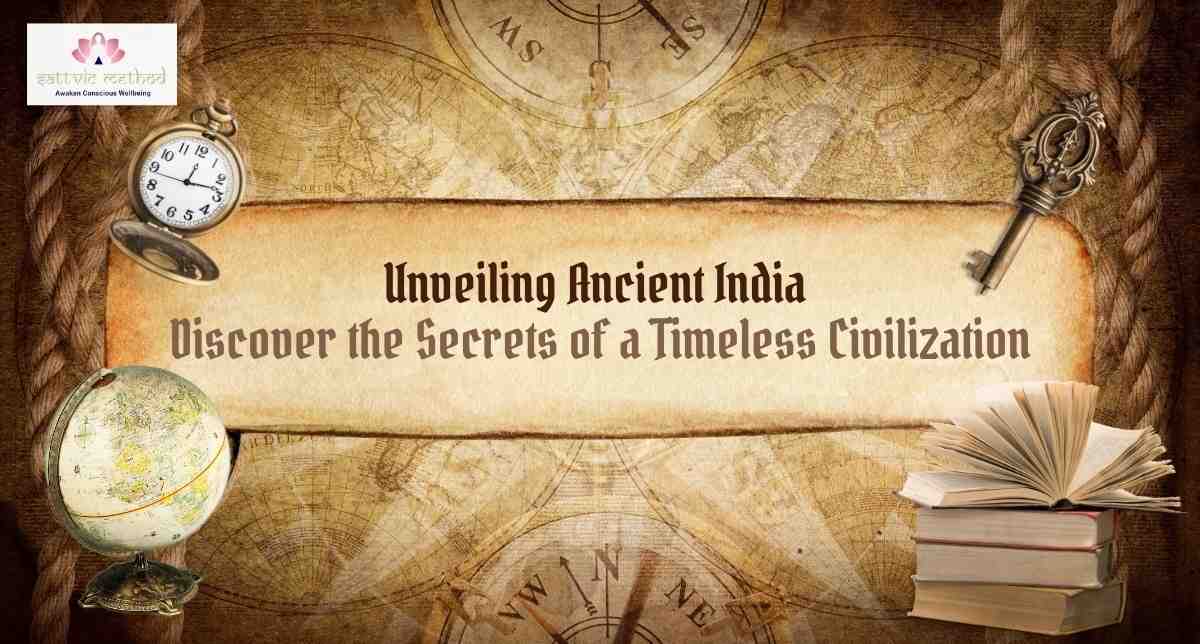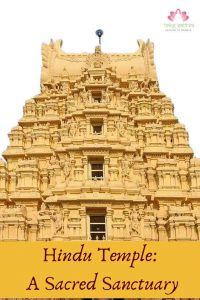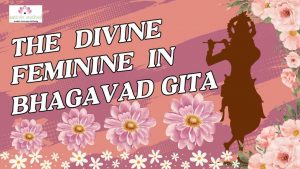Unveiling Ancient India: Discover the Secrets of a Timeless Civilization
Step back in time and embark on a captivating journey through Ancient India, a civilization that has shaped human history with its rich tapestry of culture, philosophy, and innovation. From the intricate architecture of the Indus Valley Cities to the profound spiritual teachings of the Vedas, the secrets of this timeless civilization beckon to be uncovered. Each monument, scripture, and tradition tells a story of resilience and remarkable ingenuity. As we explore the majestic palaces, vibrant art, and groundbreaking scientific discoveries, we invite you to delve deeper into the intricacies that make Ancient India not just a historical relic but a living legacy that continues to influence the world today. Join us in unveiling the mysteries that lie beneath the surface, as we rediscover a past filled with wisdom, valor, and unparalleled beauty. This journey promises to enrich your understanding and appreciation of a civilization that has transcended the ages.
The Indus Valley Civilization: A Glimpse into Early Urban Life
The Indus Valley Civilization, also known as the Harappan Civilization, marks one of the earliest cradles of urban life, flourishing around 2500 BCE. This civilization, extending across modern-day Pakistan and northwest India, showcased advanced urban planning and sophisticated civil engineering. The cities of Harappa and Mohenjo-Daro, with their meticulously planned grid layouts, sophisticated drainage systems, and impressive brickwork, stand as testaments to their architectural prowess. These early urban centers also had large public baths and granaries, indicating a high degree of social organization and public welfare.
Trade played a significant role in the Indus Valley Civilization, with evidence of trade links extending to Mesopotamia. The discovery of seals with inscriptions and symbols suggests a form of communication and possibly an early writing system. These seals, often depicting animals and mythical creatures, remain one of the many unsolved mysteries of this civilization. The standardized weights and measures found in archaeological sites indicate a robust economic system and the use of standardized units for trade and construction.
The people of the Indus Valley were also skilled in art and craft, as evidenced by the numerous artifacts found, including pottery, jewelry, and sculptures. The famous Dancing Girl bronze statue and the Priest-King sculpture reflect a high level of craftsmanship and artistic expression. Despite the decline of the Indus Valley Civilization, its contributions to urban planning, trade, and artistic heritage laid the foundation for future civilizations in the Indian subcontinent.
Major Dynasties and Empires of Ancient India
Ancient India witnessed the rise and fall of several major dynasties and empires, each contributing uniquely to the region’s history and culture. The Maurya Empire, established by Chandragupta Maurya in 321 BCE, was one of the largest and most powerful empires in ancient India. Under the reign of Ashoka the Great, the Maurya Empire reached its zenith, covering almost the entire Indian subcontinent. Ashoka’s conversion to Buddhism and his efforts to spread Buddhist teachings across Asia had a profound impact on the cultural and religious landscape of the region.
Following the Mauryas, the Gupta Empire arose in the 4th century CE, often referred to as the Golden Age of India. The Guptas are credited with significant advancements in science, mathematics, astronomy, and literature. The renowned mathematician Aryabhata and the physician Sushruta emerged during this period, making groundbreaking contributions that would influence the world for centuries. The classical Sanskrit literature flourished under the patronage of Gupta rulers, with works like Kalidasa’s poetry and drama becoming timeless masterpieces.
The Chola Dynasty, ruling over southern India from the 9th to the 13th centuries, is renowned for its naval prowess and overseas trade. The Cholas established extensive maritime trade networks, reaching as far as Southeast Asia. Their contributions to art and architecture are exemplified by the magnificent Brihadeeswarar Temple in Thanjavur, a UNESCO World Heritage site. The temple’s grandeur and intricate carvings reflect the artistic and engineering skills of the Cholas, leaving a lasting legacy that continues to inspire awe.
The Cultural Contributions of Ancient India
Ancient India’s cultural contributions are vast and diverse, influencing various aspects of life, including language, literature, music, dance, and cuisine. The rich tapestry of Indian culture is interwoven with traditions and practices that have evolved over millennia, yet continue to thrive in modern times. The Sanskrit language, one of the oldest known languages, served as the medium for many classical texts, including the Vedas, Upanishads, and epics like the Mahabharata and Ramayana. These texts not only shaped religious and philosophical thought but also influenced literature, poetry, and drama.
Indian classical music, with its roots in the ancient Vedic traditions, evolved into distinct styles such as Hindustani and Carnatic music. The intricate ragas and talas form the foundation of this musical tradition, which has been passed down through generations. Similarly, classical dance forms like Bharatanatyam, Kathak, and Odissi are deeply rooted in ancient temple rituals and storytelling traditions. These art forms, characterized by their expressive gestures, intricate footwork, and rhythmic patterns, continue to be integral to India’s cultural heritage.
Cuisine, another significant aspect of Indian culture, showcases a rich diversity of flavors and techniques. The ancient practice of Ayurveda, which emphasizes the balance of body, mind, and spirit through diet and lifestyle, has influenced Indian culinary traditions. Spices, herbs, and ingredients native to the Indian subcontinent have shaped regional cuisines, each with its unique taste and preparation methods. From the aromatic biryanis of the Mughal era to the vegetarian thalis of South India, the culinary heritage of ancient India continues to tantalize taste buds worldwide.
Ancient Indian Philosophy and Religion
The philosophical and religious landscape of ancient India is marked by profound teachings and diverse belief systems that have shaped the spiritual and ethical framework of the region. The Vedas, composed between 1500 and 500 BCE, form the bedrock of Indian philosophy and religion. These ancient scriptures encompass hymns, rituals, and philosophical discourses that explore the nature of existence, the universe, and the divine. The Upanishads, a later addition to the Vedas, delve deeper into metaphysical concepts, introducing ideas such as Brahman (the ultimate reality) and Atman (the individual soul).
Buddhism and Jainism, two major religions that originated in ancient India, offered alternative philosophical and ethical perspectives. Founded by Siddhartha Gautama, Buddhism emphasized the Four Noble Truths and the Eightfold Path as a means to achieve enlightenment. Jainism, established by Mahavira, advocated for non-violence (ahimsa), truth (satya), and asceticism as paths to spiritual liberation. These religions not only influenced Indian thought but also spread across Asia, leaving an indelible mark on global spiritual traditions.
Hinduism, with its diverse practices and beliefs, evolved over centuries, absorbing and integrating various philosophical ideas. The Bhagavad Gita, a sacred text within the Mahabharata, presents a synthesis of Vedic and Upanishadic teachings, emphasizing the concepts of dharma (duty), karma (action), and bhakti (devotion). The philosophical schools of Vedanta, Yoga, and Samkhya further explored these ideas, offering comprehensive frameworks for understanding the self and the universe. The rich philosophical and religious heritage of ancient India continues to inspire and guide millions of people worldwide.
Advances in Science and Technology in Ancient India
Ancient India made significant strides in science and technology, with contributions that have had a lasting impact on various fields. Mathematics, in particular, saw remarkable advancements with the development of the decimal system and the concept of zero. The mathematician Aryabhata, in his work Aryabhatiya, introduced trigonometric functions and calculated the value of pi with remarkable accuracy. His contemporary, Brahmagupta, further developed algebraic methods and explored the properties of zero, laying the groundwork for modern mathematics.
Astronomy also flourished in ancient India, with scholars like Varahamihira and Bhaskara making significant contributions. Varahamihira’s work, the Pancha-Siddhantika, compiled the astronomical knowledge of the time, including details on planetary motions and eclipses. Bhaskara’s treatise Siddhanta Shiromani provided insights into the heliocentric concept, long before it was recognized in the West. These astronomical texts and observations influenced later Islamic and European astronomers, highlighting the global impact of ancient Indian science.
In the field of medicine, the ancient Indian system of Ayurveda emphasized holistic health and wellness. The Sushruta Samhita, attributed to the physician Sushruta, is one of the earliest texts on surgery and medical practices. It details various surgical procedures, including rhinoplasty, cataract surgery, and techniques for suturing wounds. The Charaka Samhita, another seminal text, outlines principles of diagnosis, treatment, and the use of medicinal plants. These ancient medical texts laid the foundation for traditional Indian medicine and continue to influence contemporary healthcare practices.
The Role of Trade and Economy in Ancient Indian Society
Trade and economy played a crucial role in shaping ancient Indian society, fostering connections with neighboring regions and beyond. The Indian subcontinent’s strategic location and diverse resources made it a hub for economic activity and cultural exchange. The Silk Road, an ancient network of trade routes, facilitated the exchange of goods, ideas, and cultures between India, Central Asia, and the Mediterranean. Indian merchants traded spices, textiles, precious stones, and other commodities, contributing to the prosperity of ancient Indian cities.
Maritime trade routes also connected ancient India with Southeast Asia, the Middle East, and East Africa. The ports of Gujarat, Maharashtra, and Tamil Nadu were bustling centers of trade, where merchants exchanged goods with their counterparts from distant lands. The Periplus of the Erythraean Sea, a Greek maritime guide, provides detailed accounts of these trade networks, highlighting the extensive reach of Indian merchants. The exchange of goods was accompanied by the dissemination of cultural practices, religious beliefs, and technological innovations.
The economy of ancient India was also characterized by agricultural productivity and artisanal craftsmanship. The fertile plains of the Indus and Ganges rivers supported extensive farming, while the Deccan plateau and coastal regions were known for their diverse crops. Artisans and craftsmen produced exquisite textiles, pottery, metalwork, and jewelry, which were highly sought after in domestic and international markets. The guild system, known as Shreni, regulated trade and craft activities, ensuring quality and standardization. The thriving trade and economy of ancient India contributed to its cultural and technological advancements, leaving a lasting legacy.
Ancient Indian Art and Architecture: A Lasting Legacy
The art and architecture of ancient India reflect the cultural, religious, and social dynamics of the time, leaving a lasting legacy that continues to inspire awe. The rock-cut caves of Ajanta and Ellora, with their intricate carvings and vibrant frescoes, provide a glimpse into the artistic achievements of ancient Indian sculptors and painters. The Ajanta caves, dating back to the 2nd century BCE, depict scenes from the life of the Buddha, while the Ellora caves, spanning from the 6th to the 10th centuries, showcase Hindu, Buddhist, and Jain monuments. These masterpieces of rock-cut architecture demonstrate the skill and creativity of ancient Indian artists.
Temple architecture also flourished in ancient India, with each region developing its distinct style. The Dravidian architecture of South India is exemplified by the magnificent Brihadeeswarar Temple in Thanjavur, built during the Chola Dynasty. The temple’s towering gopuram (gateway) and intricate carvings reflect the grandeur and devotion of the Chola rulers. In North India, the Nagara style of temple architecture is characterized by its curvilinear shikharas (spires) and elaborate ornamentation. The Sun Temple of Konark and the Khajuraho group of temples are iconic examples of this architectural tradition.
Ancient Indian art also found expression in sculpture, metalwork, and pottery. The bronze sculptures of the Chola period, known for their grace and dynamism, are celebrated for their artistic excellence. The Dancing Shiva (Nataraja) is a quintessential representation of Chola bronzes, capturing the cosmic dance of creation and destruction. The terracotta figurines and pottery of the Indus Valley Civilization reflect everyday life and religious beliefs, showcasing the artistic sensibilities of the time. The enduring legacy of ancient Indian art and architecture continues to influence contemporary artistic practices and inspire admiration.
Exploring the Mysteries of Ancient Indian Texts
The ancient texts of India, encompassing a wide range of subjects, offer a rich repository of knowledge and wisdom. The Vedas, composed in archaic Sanskrit, are the oldest known scriptures of Hinduism and form the foundation of Indian spiritual and philosophical thought. The Rigveda, the earliest of the four Vedas, contains hymns dedicated to various deities, while the Yajurveda, Samaveda, and Atharvaveda focus on rituals, chants, and practical knowledge. The Upanishads, philosophical treatises appended to the Vedas, delve into metaphysical concepts, exploring the nature of reality, the self, and the cosmos.
The epics Mahabharata and Ramayana, composed in the later Vedic period, are monumental works of literature that continue to captivate audiences. The Mahabharata, attributed to the sage Vyasa, is an epic narrative of the Kurukshetra War, interwoven with philosophical discourses, including the Bhagavad Gita. The Ramayana, attributed to the sage Valmiki, recounts the life and adventures of Prince Rama, emphasizing ideals of duty, honor, and devotion. These epics have been retold and adapted in various forms, influencing art, performance, and cultural traditions across Asia.
Ancient Indian texts also encompass scientific and technical knowledge. The Arthashastra, attributed to the sage Kautilya (Chanakya), is a treatise on statecraft, economics, and military strategy, providing insights into governance and administration. The texts of Ayurveda, such as the Charaka Samhita and Sushruta Samhita, offer a comprehensive understanding of medicine, surgery, and health. The works of mathematicians and astronomers, including Aryabhata, Brahmagupta, and Bhaskara, explore complex mathematical concepts and astronomical observations. The rich corpus of ancient Indian texts continues to be a source of inspiration and scholarly inquiry, revealing the intellectual achievements of a timeless civilization.
Conclusion: The Enduring Influence of Ancient India on Modern Society
The enduring influence of ancient India on modern society is a testament to its remarkable contributions to culture, philosophy, science, and art. The architectural marvels of ancient India, from the cities of the Indus Valley to the temples of the Chola Dynasty, continue to inspire contemporary architects and engineers. The philosophical and spiritual teachings of the Vedas, Upanishads, and epics provide timeless wisdom that resonates with people across the world. The scientific advancements of ancient Indian scholars laid the groundwork for modern mathematics, astronomy, and medicine, highlighting the civilization’s intellectual prowess.
The cultural heritage of ancient India, with its diverse traditions in music, dance, literature, and cuisine, enriches global cultural landscapes. The holistic principles of Ayurveda and yoga, rooted in ancient Indian philosophy, promote health and well-being in modern society. The legacy of trade and economic exchange established by ancient Indian merchants continues to influence global commerce and cultural interactions. The rich tapestry of ancient Indian civilization, woven with threads of innovation, creativity, and wisdom, remains a source of inspiration and admiration.
As we delve into the secrets of this timeless civilization, we uncover a legacy that transcends the ages, offering valuable insights and enriching our understanding of human history. The journey through ancient India reveals a civilization marked by resilience, ingenuity, and a profound appreciation for the interconnectedness of life. By exploring the mysteries and marvels of ancient India, we not only honor its contributions but also draw inspiration to shape a future that embraces the wisdom of the past. The timeless legacy of ancient India continues to illuminate the path forward, reminding us of the enduring power of knowledge, culture, and human spirit.




